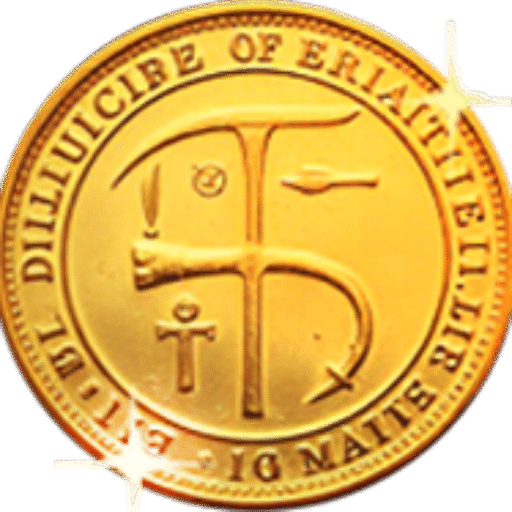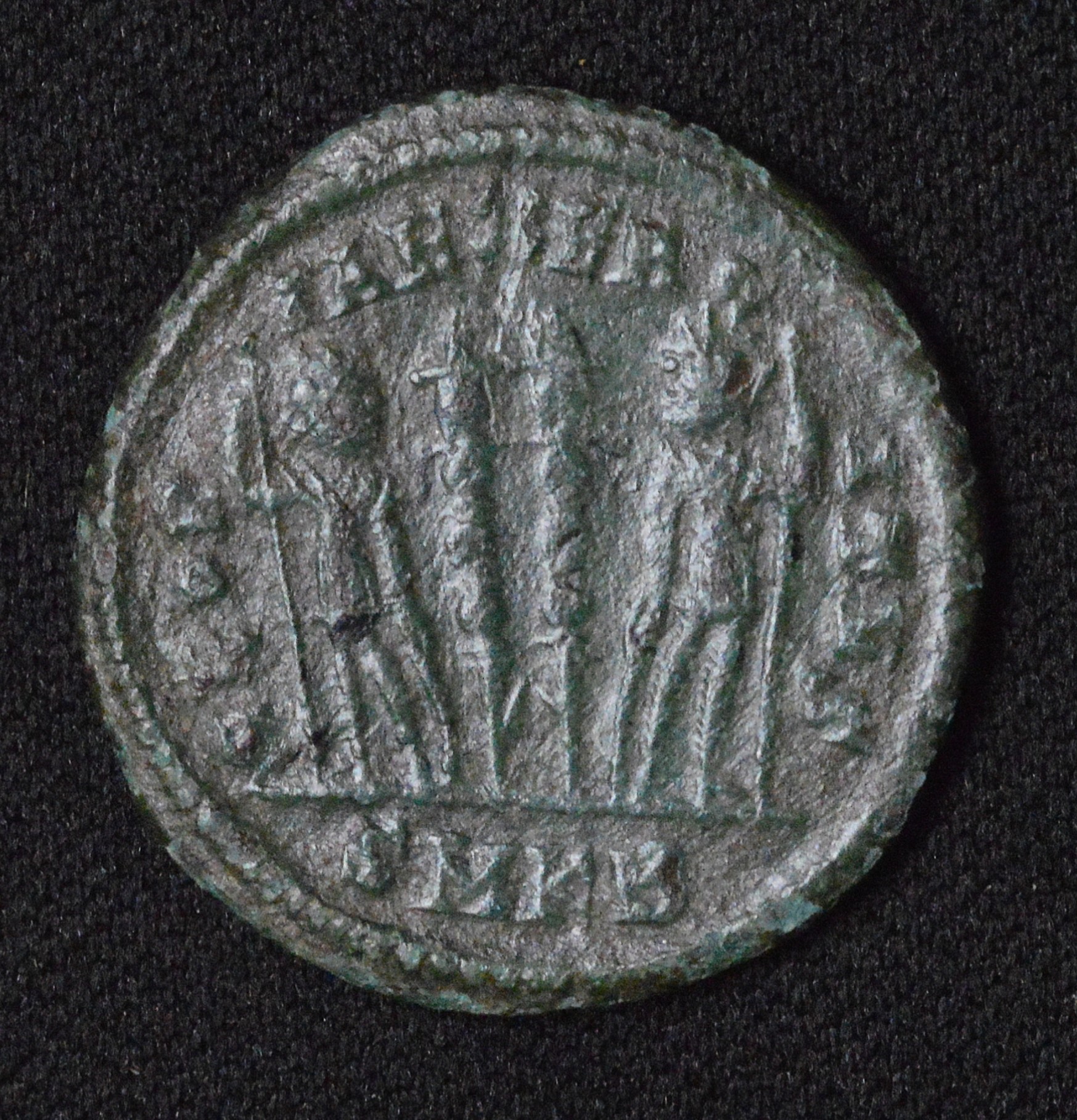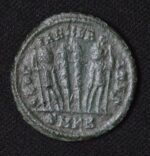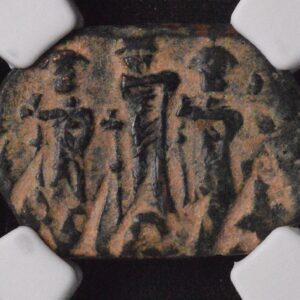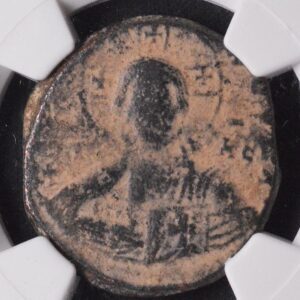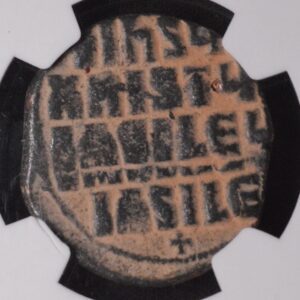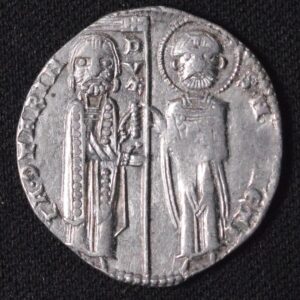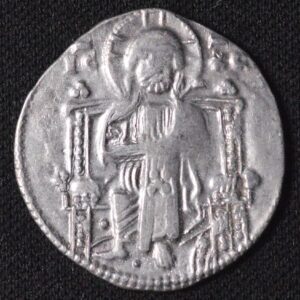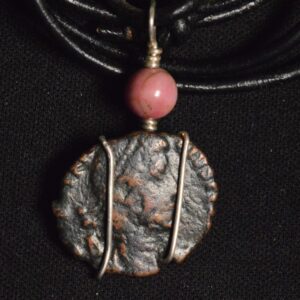FREE SHIPPING
Free Shipping for Orders over $150
Description
Very rare and unique bronze Roman coins stand apart due to unusual designs, limited mintages, or connections to significant historical events or figures. A prime example is the Nero Port of Ostia sestertius, struck in bronze between AD 62–68, which features an elaborate reverse depicting the busy port harbor of Ostia—including ships, lighthouses, and storage buildings. This coin is celebrated for its intricate artistry and for commemorating Nero’s ambitious building projects, making it exceedingly valuable and cherished among collectors.
Other highly sought-after rare bronze coins include:
The Titus Colosseum sestertius, showing the iconic Roman amphitheater.
Diocletian’s follis, an important reform-era bronze coin that exemplified a stabilized currency system and is valued for its economic significance and relative scarcity today.
Special regional and low-value denominations, like the half quadrans, which were struck in very small numbers for short periods and sometimes only in specific regions, making surviving specimens truly unique.
These coins are often independently authenticated and hand-struck, reflecting the craftsmanship of ancient mints. Rare examples may range in diameter from 2/5″ to 1″, often bearing distinctive patinas due to age and burial conditions. Their rarity might derive from being minted for short-lived emperors, special commemorative purposes, or showcasing one-of-a-kind reverse designs illustrating milestones in Roman civic life.
Owning a unique rare bronze Roman coin from Lot #B means holding a remarkable artifact—one with a unique design, tied to a particular emperor or historic moment, and celebrated for its beauty, scarcity, and legacy within the numismatic world. These coins are among the most desired treasures for both scholars and collectors, making them standout highlights in any ancient coin collection.
Very rare and unique bronze Roman coins stand apart due to unusual designs, limited mintages, or connections to significant historical events or figures. A prime example is the Nero Port of Ostia sestertius, struck in bronze between AD 62–68, which features an elaborate reverse depicting the busy port harbor of Ostia—including ships, lighthouses, and storage buildings. This coin is celebrated for its intricate artistry and for commemorating Nero’s ambitious building projects, making it exceedingly valuable and cherished among collectors.
Other highly sought-after rare bronze coins include:
The Titus Colosseum sestertius, showing the iconic Roman amphitheater.
Diocletian’s follis, an important reform-era bronze coin that exemplified a stabilized currency system and is valued for its economic significance and relative scarcity today.
Special regional and low-value denominations, like the half quadrans, which were struck in very small numbers for short periods and sometimes only in specific regions, making surviving specimens truly unique.
These coins are often independently authenticated and hand-struck, reflecting the craftsmanship of ancient mints. Rare examples may range in diameter from 2/5″ to 1″, often bearing distinctive patinas due to age and burial conditions. Their rarity might derive from being minted for short-lived emperors, special commemorative purposes, or showcasing one-of-a-kind reverse designs illustrating milestones in Roman civic life.
Owning a unique rare bronze Roman coin from Lot #B means holding a remarkable artifact—one with a unique design, tied to a particular emperor or historic moment, and celebrated for its beauty, scarcity, and legacy within the numismatic world. These coins are among the most desired treasures for both scholars and collectors, making them standout highlights in any ancient coin collection.
CUSTOMER FEEDBACK




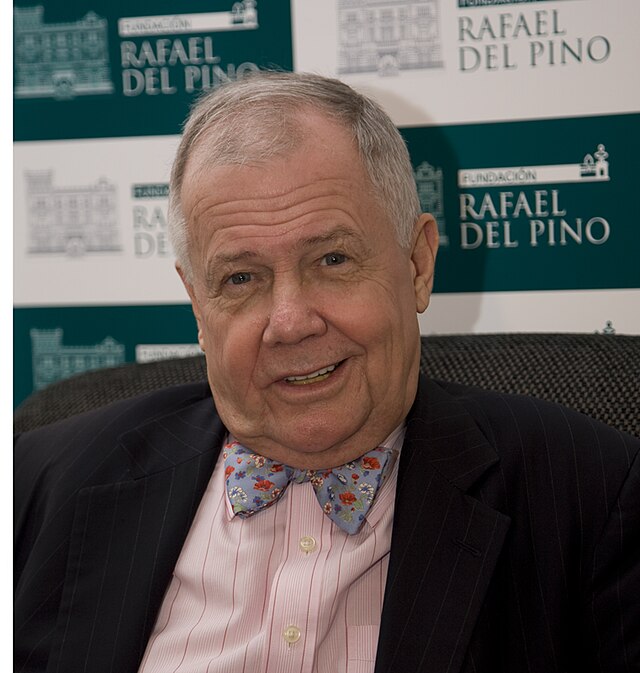



Other Products to See
Heraclius Constantine and Martina, AD 610-641 AE, NGC Certified Authentic
$350.00



SHIPPING POLICY
Your order is shipped from the United States with USPS tracking within one business day.
14 Day Return Policy
You can return your item back within
14 days of the purchase

Secure payments
Your payments are 100% secure and are processed through Square or PayPal on a protected security network.
SHIPPING POLICY
FREE International and Domestic (United States) shipping. Your order is shipped with USPS tracking 24 hours after you order.
14 Day Return Policy
You can return your item back within
14 days of the purchase

Secure payments
Your payments are 100% secure and are processed through Square or PayPal on a protected security network.
RESOURCES
support
Get Fresh Articles!
Sign up now to receive our articles for the latest insights and promotions!
RESOURCES
support
Get Fresh Articles!
Signup our newsletter to get update insight or promotions.

